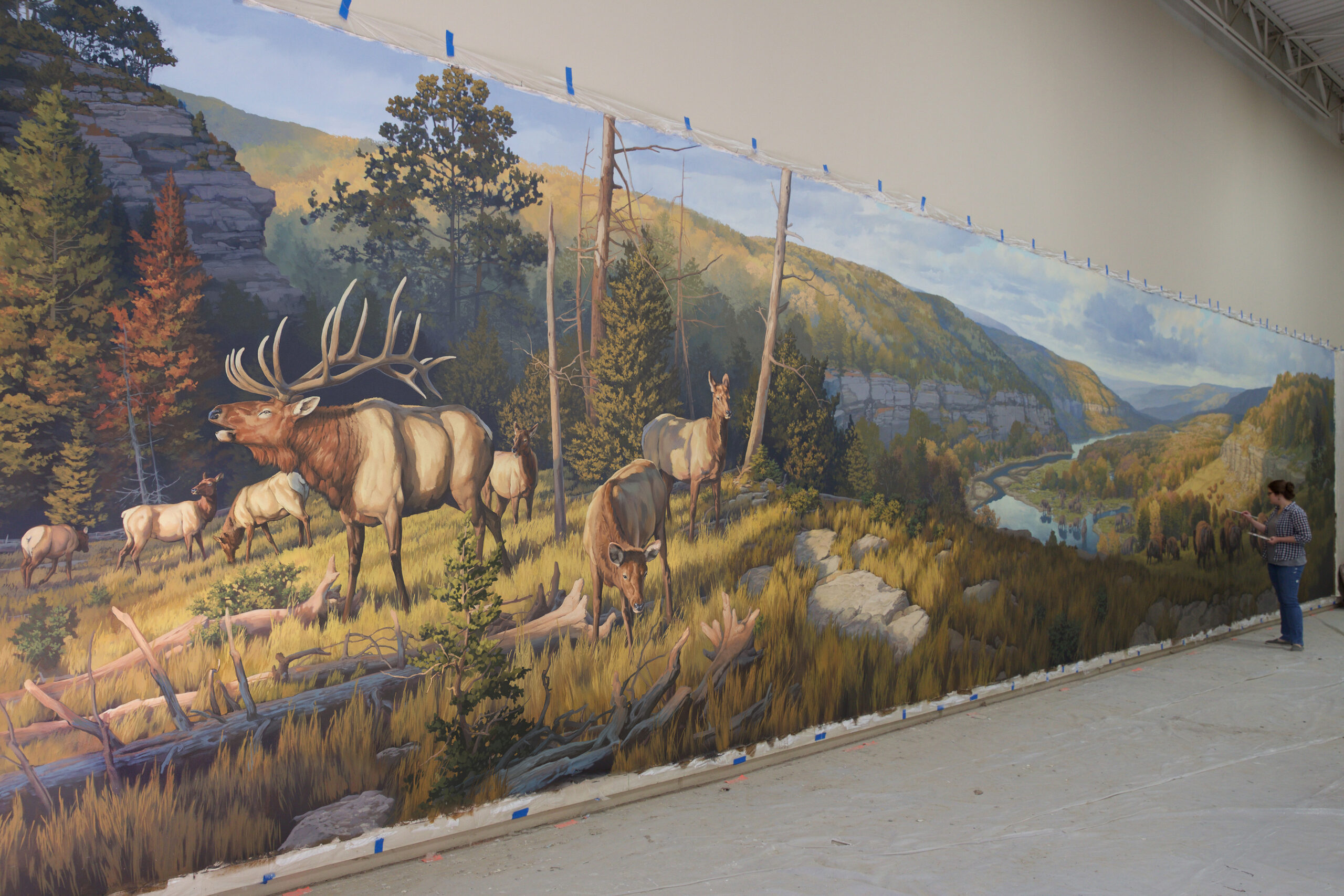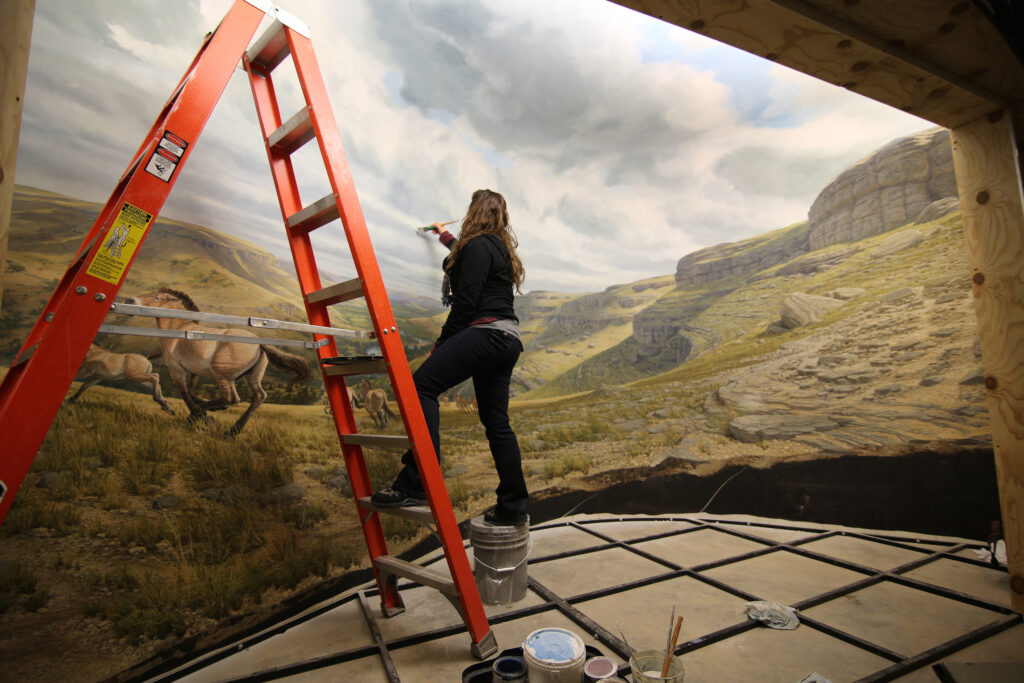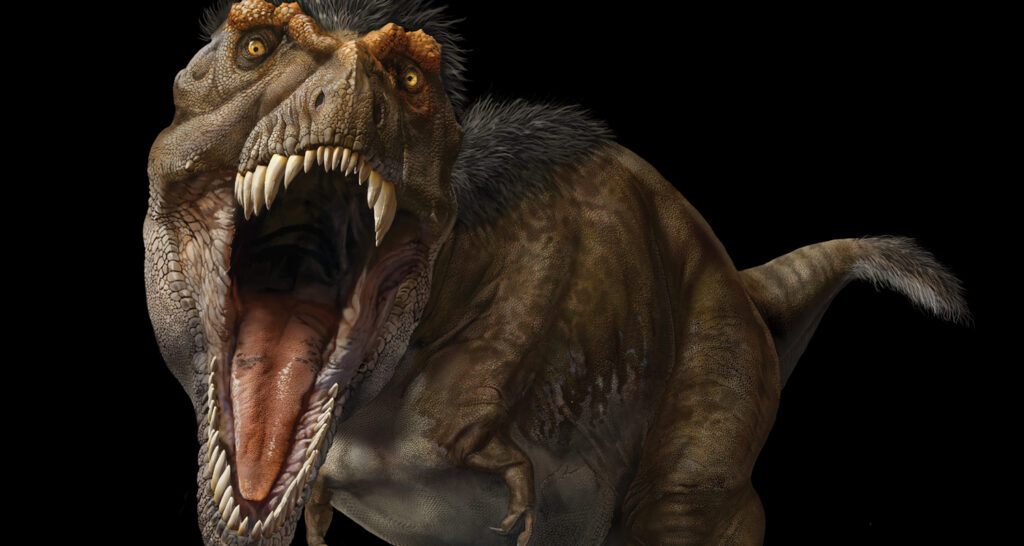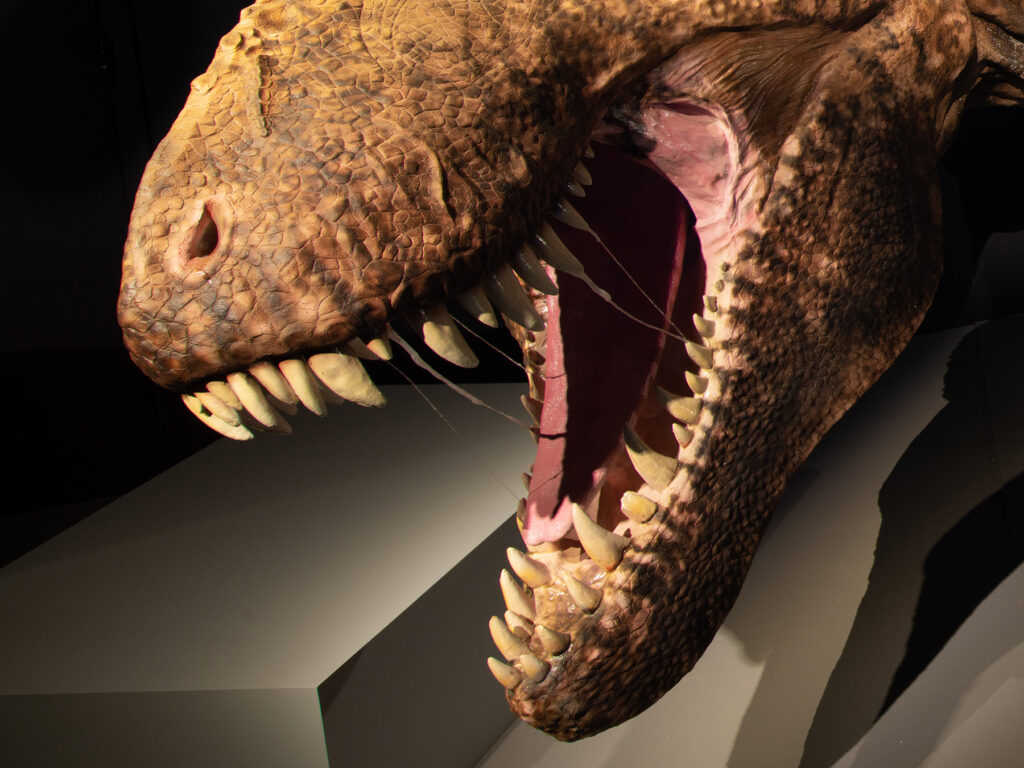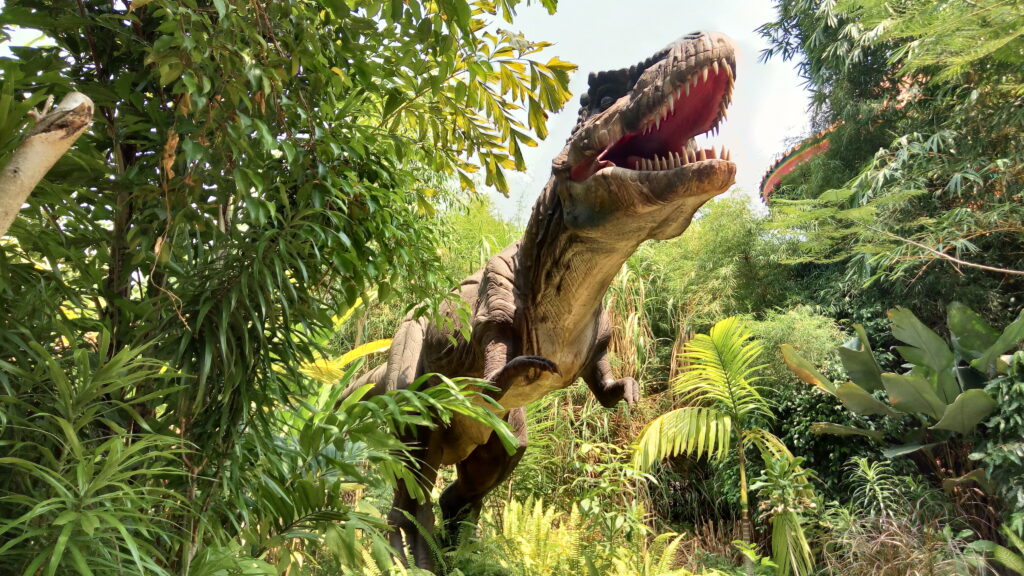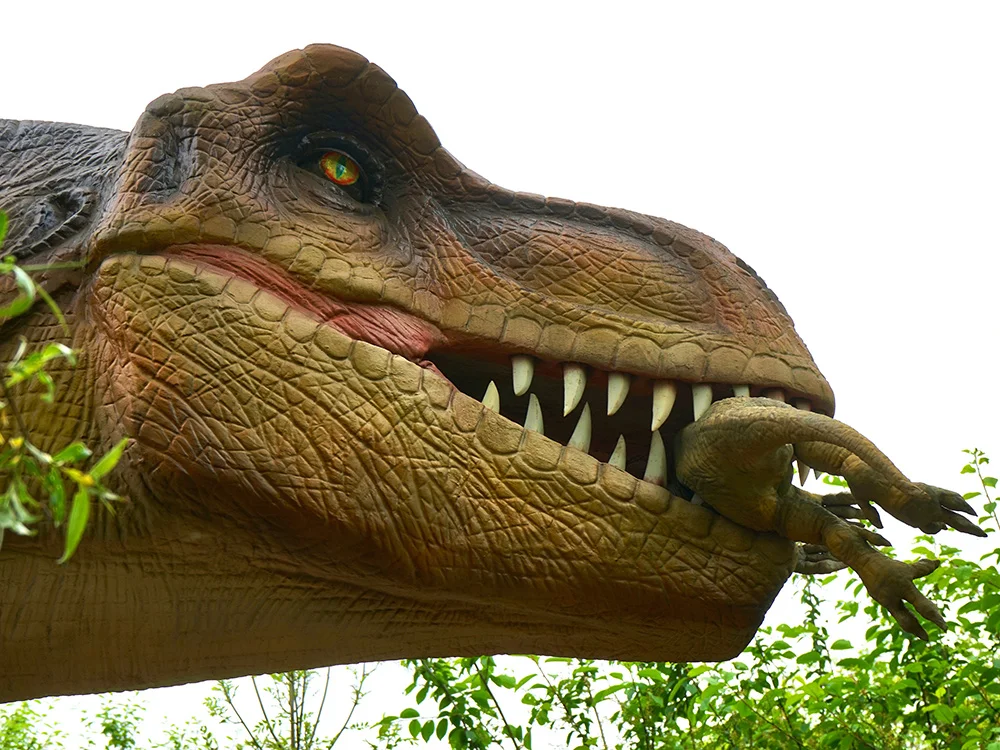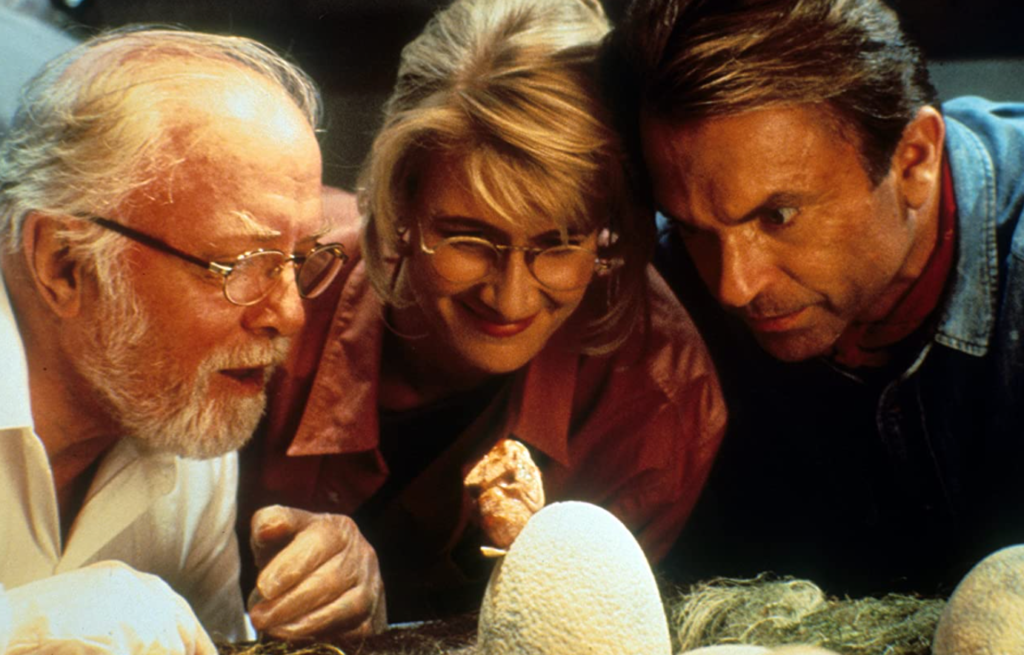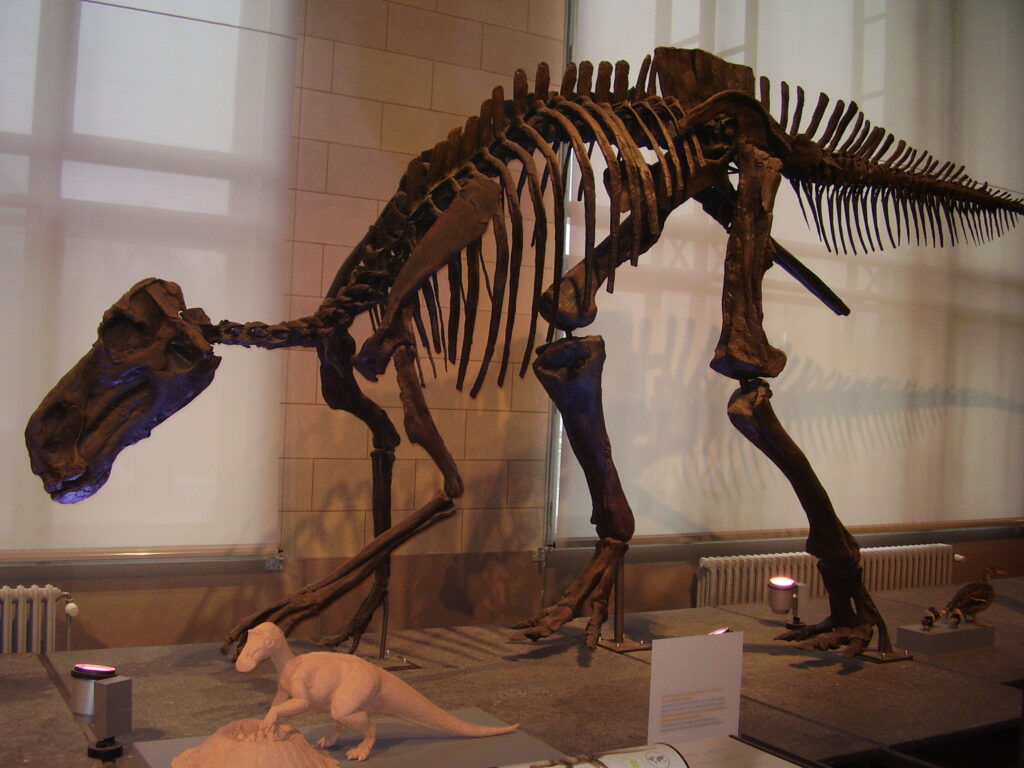At the Minnesota-based Blue Rhino Studio, Beth assists with creating large-scale murals, sculptures, and reconstructions of prehistoric times for museums and paleoart exhibits.
Beth’s style is energetic and rich with detail. Whether she’s painting a mural or digitally replicating the look and feel of watercolour or ink illustration, you’ll find bold patterns and colours in her work, along with a myriad of little details in the animals and the scenery that tell an engaging story about ancient life.
One of the first large prehistoric projects she worked on at Blue Rhino Studio was in partnership with the Field Museum in Chicago for their travelling mammoths and mastodons exhibition, “Mammoths and Mastodons: Titans of the Ice Age.”
This project gave Beth an even greater appreciation for the science behind paleontology. “It was so fun! We got to work with some major paleontologists, people that were doing cutting-edge research, and we learned so much from them.”
“I was so thrilled and got really into doing the research and digging into the anatomy of these animals,” she continues. “I felt connected to that project and I just could not wait to work on the next one and the next one and the next one.”
Some of Beth’s “next ones” at Blue Rhino Studio include: a mural reconstructing SUE the T. rex and their Hell Creek habitat for the Field Museum; a mural of ice age animals travelling across a tundra landscape for the New York State Museum; a diorama depicting American White Pelicans for the Royal Alberta Museum; and illustrations for several zoos and museums, as well as the US National Park Service.
When creating a large-scale reconstruction, a mural, or an illustration, Beth considers the animal’s appearance and anatomy as well as fossils that have been discovered so far. She also digs into the geological period, climate, and ecological niche the animal occupied.
To keep up with new research, she reads science magazines and academic papers. “I have to approach it like a journalist. I have to do the Five Ws and the How,” she says. “It’s really important to me to thoroughly do my homework because the science, the paleontology, the research—that’s the scaffolding that the art is built on.”
Some other questions she might ask herself before starting a new piece are: “If it’s a prey animal and there’s a predator nearby, how would it look alert or alarmed?” Or “Does it have seasonal habits? Does it have mating displays at certain times of the year?”
“It’s like I’m time travelling!” she exclaims.
Beth stresses that while an understanding of science is necessary, paleoart should be appreciated not just for its accuracy, but for its artistry as well—“art plays a valuable role in educating and interpreting science for the world.”
Something Beth wants people to remember is that paleoart “exists in a space between art and science.” This means there is room for dreaming and imagination, allowing us to connect with something that once was.
For instance, paleoartists like Greg Paul started illustrating Tyrannosaurs with feathers on them long before the claim that some dinosaurs had feathers was widely accepted in the public sphere.
“Paleoart reminds us that we have this incredible global history. It's something we all have a claim to, like a fairytale or a legend with larger-than-life characters and millennia-long storylines being written every day by scientists,” Beth says.
“It’s for everyone because it's the story of our shared history of life on the planet, a story based in reality and grounded in science, and that just makes it even more important.”
Header photo by Blue Rhino Studio.
Dig further into the world of paleontology.
Visit our feature exhibition, T. rex: The Ultimate Predator presented by RBC and White Spot Restaurants. It'll take you back in time to encounter the prehistoric wonders of the late Cretaceous period and come face-to-face with a 66-million-year-old marvel!
